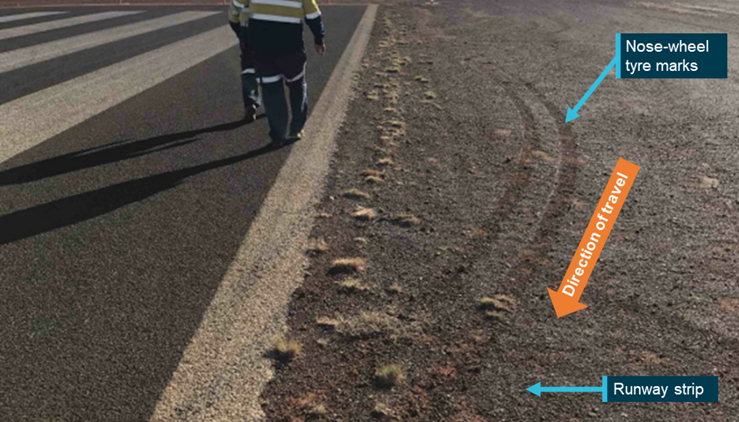
|
Key points:
|
Flight crews should utilise all available resources when they encounter unexpected events during taxiing, an Australian Transport Safety Bureau report into a taxiing excursion by an airliner at Laverton notes.
On the afternoon of 28 September 2021, a Fokker F100 aircraft, operated by Alliance Airlines, landed uneventfully at Laverton Airport, Western Australia, following a scheduled passenger flight from Perth, with 2 flight crew, 3 cabin crew, and 75 passengers on-board.
After completing the landing roll, the captain began to taxi the aircraft towards the end of the runway, intending to turn around and backtrack to the taxiway.
Upon reaching the end of the runway, the captain commenced a right turn by rotating the nose-wheel handwheel, or tiller. However, the captain was unable to achieve full tiller rotation, even when using the force of both hands.
They attempted to tighten the turn by applying the right inboard brake, and asymmetric thrust, but this did not have the desired effect.
“A torn boot on a universal joint probably restricted the operation of the aircraft’s nose-wheel steering system, preventing the aircraft from completing the turn on the runway,” ATSB Director Transport Safety Stuart Macleod explained.
Realising the aircraft would not be able to complete the turn without the nose-wheel leaving the runway surface, the captain decided to continue.
They later reported this decision was made based on their knowledge of the ground next to the runway being compact dirt, and the fact the airport had a single runway and no ground support equipment, so stopping would prohibit other aircraft from landing.
“In continuing the turn the nose-wheel left the runway surface and entered the runway strip, increasing the risk of damage to the aircraft,” Mr Macleod said.
“While there was no damage to the aircraft, there was no assurance that the runway strip was clear of hazardous debris and could safely manoeuvre on the strip.”
Mr Macleod noted that other aircraft would have been unable to safely land if the Fokker had remained on the runway.
“But options such as having the airport staff inspect the runway strip before completing the turn onto it were available,” Mr Macleod said.
“This incident highlights that when flight crews encounter an unexpected event and there is sufficient time to assess available options, they should utilise available resources to determine the safest course of action.”
After completing the turn and re-entering the runway, the captain taxied the aircraft to the terminal without incident.
A post-flight inspection identified damaged insulation in the nose-wheel area, and the torn universal joint boot on the tiller shaft.
Read the report: Taxiing excursion involving Fokker F100, VH-FKD Laverton Airport, Western Australia, on 28 September 2021


